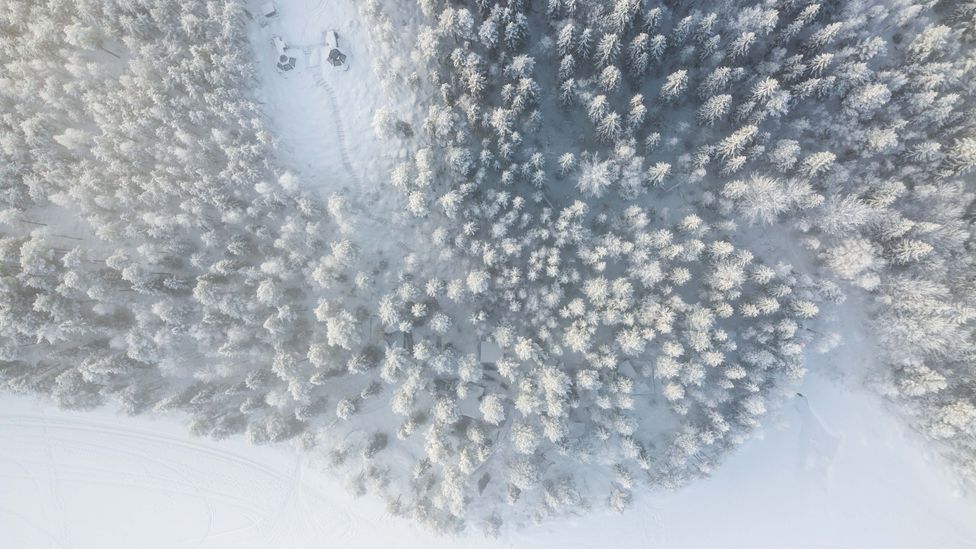The old-growth forest backed away in every direction as far as the eye could see. Low-slung branches, webbed in black lichen, splintered from thick trunks, undoubtedly providing a perfect hiding place for all manner of creatures. Wolves, lynx, bears.
Kerry laughed.
"The bears are still hibernating," she said, as she led me along the narrow footpath into the camp where I'd be spending the night. Tall and athletic, Kerry struck the image of an archetypal safari guide. Her introductory speech, however, was far less textbook.
"In terms of animals you might see during your stay here, possibly a couple of rabbits," she noted as we continued walking, her high-pitched English accent contrasting with her heavy-booted footsteps. "I think I actually saw a squirrel the other day."
We walked on through the trees until the camp came into view, a huddle of canvas tents and wooden cabins surrounding a square fire pit. It was a scene that could have been plucked from a glossy safari brochure, had everything not been covered in a thick layer of fresh snow.
Located on the boundary of Lapland province in far northern Sweden, Aurora Safari Camp made history as the first tented winter glampsite to operate in an Arctic climate. Since 2013, visitors from all corners of the world have travelled to this remote Scandinavian safari camp to bed down in freezing conditions, despite the fact that, for much of the year, there are no animals to see here. The obvious question is: why?
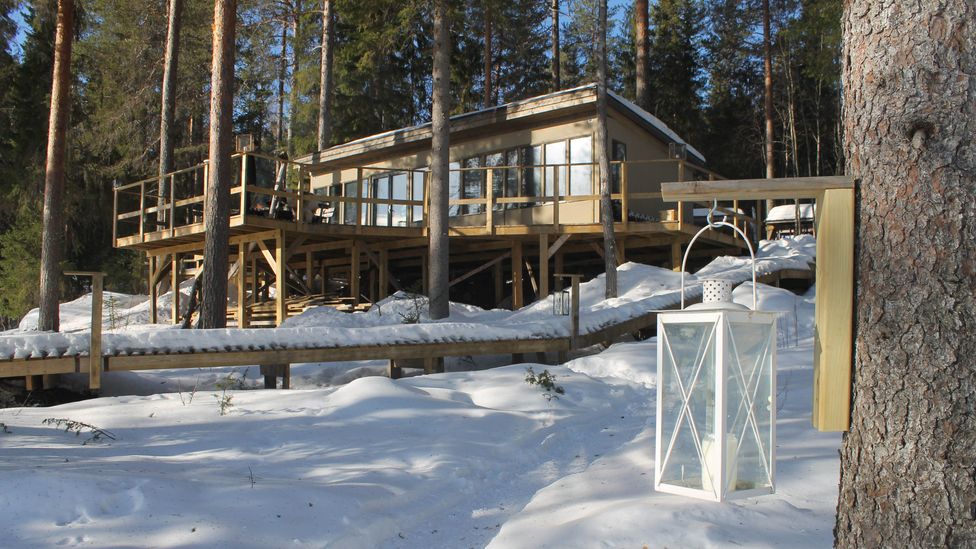
Aurora Safari Camp is the first tented winter glampsite to operate in an Arctic climate (Credit: Jack Palfrey)
"Jonas will explain everything," said Kerry, as we arrived by the fireside where great hunks of wood were already burning. Hailing from Sussex, in the south of England, Kerry originally came to the camp as a guest, found herself enamoured by the frigid landscape, and returned the following year to work at the site.
"He'll be here soon," she added, setting off back down the track towards the great lake the camp overlooks, which, even on this sunny afternoon in late March, was still covered in a layer of ice thick enough to support a steady stream of snowmobile traffic.
A few hundred metres out from what would have been the lake's shoreline, I could spy the camp's famed sauna, which floats on the surface of the lake in summer and is frozen in place during the winter months. A neatly carved hole alongside beckoned brave guests into pairing their serene steam session with a bone-chilling dip.
A sudden rumble of an engine pulled me from my musings. I turned to see a large snowmobile skid to a halt and Jonas Gejke, the camp's founder, stride towards me.
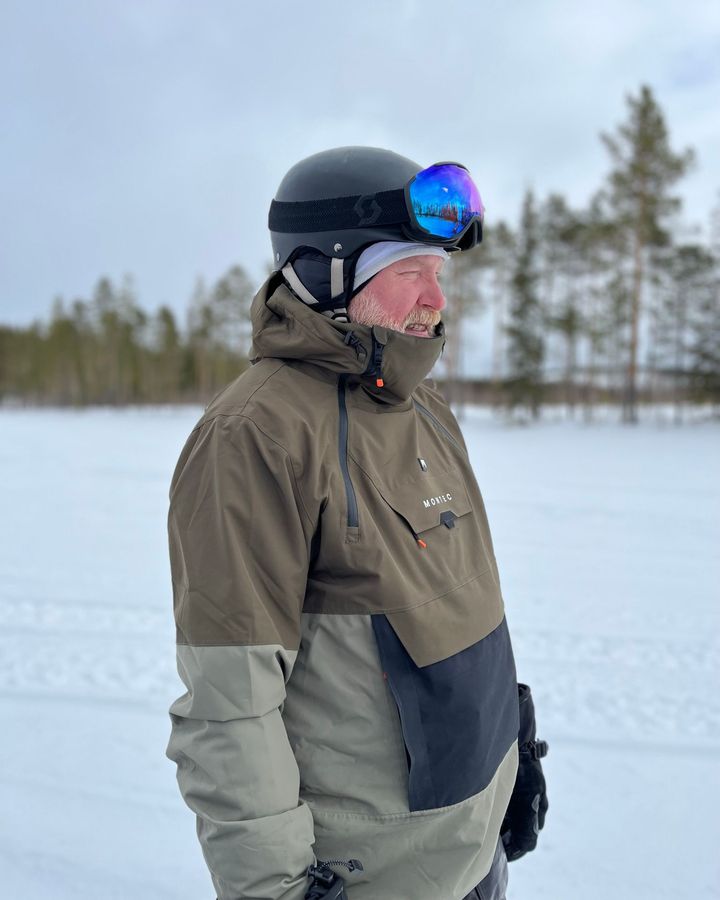
Jonas Gejke spent 25 years managing and building safari camps throughout East Africa (Credit: Jack Palfrey)
Broad shouldered with a wild, white beard and narrow, sharp eyes, Gejke claims people often describe him as looking like an axe murderer. But the wide grin planted on his face suggested he'd at least be a friendly one.
I had many burning questions to ask about his one-of-a-kind safari camp, but before we'd had time to do little more than shake hands, he'd handed me a pair of long wooden skis, slipped into a pair of his own and slid off down the trail through the forest and out onto the frozen lake. A little unsteadily, I followed.
As we skied, Gejke explained how he'd acquired his knowledge of running safari camps from his time in Kenya. While at university in his hometown of Uppsala, about 75km north of Stockholm, he came across a notice seeking a manager for a camp in the Masai Mara. Without having ever been to Africa or boasting any previous experience in the hospitality industry – or even knowing where, exactly, the Masai Mara was – he applied for the job.
"I called them, and said, 'I'm really interested in this job. This has always been my dream. I'm really good with wildlife.' I just made up a story," he told me.
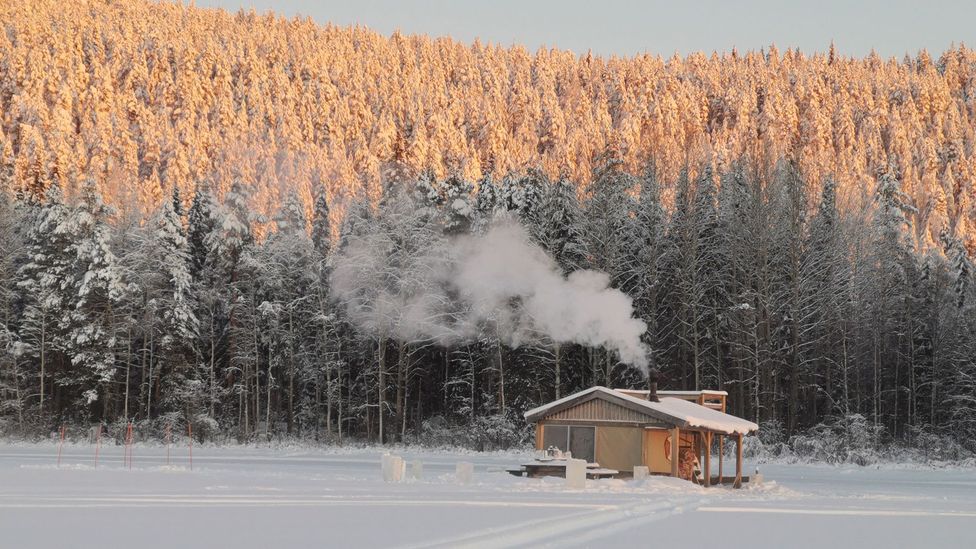
The sauna floats on the surface of the lake in summer and is frozen in place during winter (Credit: Fredrik Broman)
Of course, the company refused to give him an interview. So, he called six more times until he got one. From there, he managed to successfully talk his way into the role, an opportunity that kick-started a 25-year career managing and building safari camps throughout East Africa.
When the pull of home finally became too strong, there was only one thing for Gejke to do next. Joining onto a fledgling project started by Fredrik Broman, a fellow Swede Gejke had met in Nairobi, the duo would work together to run the first African-style safari camp in the Swedish Arctic – the first iteration of the Aurora Safari Camp of today.
After an hour sliding silently through the snowy landscape, we paused to rest at a wooden hiker's shelter, common in this part of northern Sweden. Crowning an exposed hilltop, the spot was clearly a popular meeting point. Two fellow skiers, with their small dog in tow, conversed with a gang of snowshoers, drinking coffee from a pot that had warmed on the fire.
Gejke recognised one of the snowshoers – the local priest – and joined them for a drink while I took in the view. The lake we'd just crossed appeared the pristine white of vitsippor (white anemone) petals that blanket Sweden's forests each spring, blemished only with a smattering of small, colourful circles – the coats of huddled locals passing their afternoons ice fishing. Beyond the lake, the forested hills rolled into the horizon.
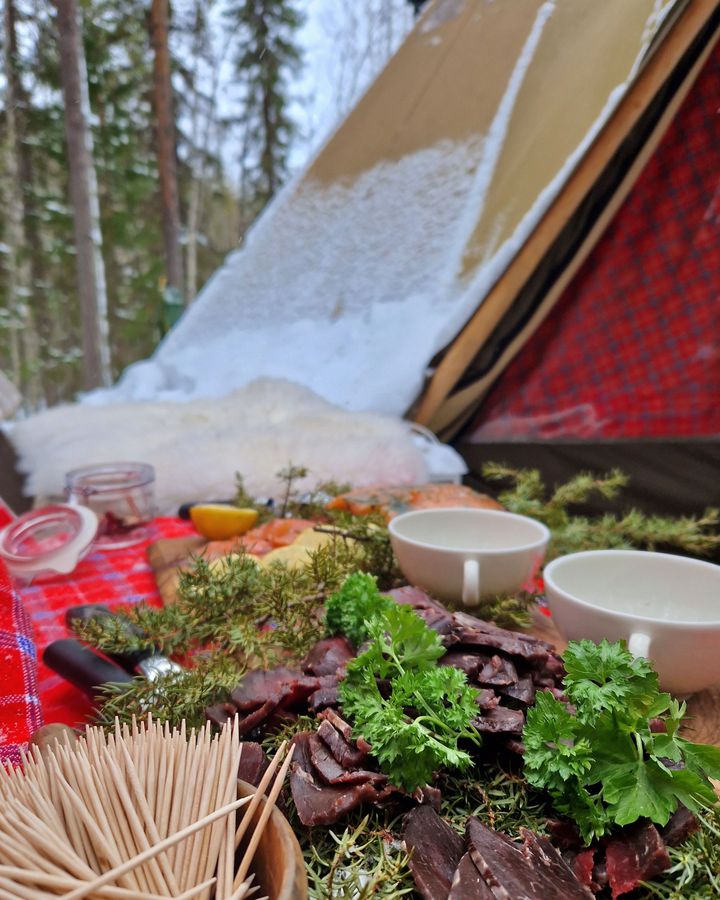
The menu at Aurora Safari Camp includes local delicacies like cured reindeer meat (Credit: Fredrik Broman)
Though it perhaps lacks recognition as such, Swedish Lapland is one of the world's great wild spaces. The province squeezes eight national parks into its borders, including two of Europe's oldest, Sarek National Park and Abisko National Park, both of which were founded in 1909. Collectively, many of these spaces form the Unesco-listed Laponian Area, the largest land area in the world that's protected for use by an Indigenous population, the Sami, who still lead their vast herds of reindeer up into the region's bountiful mountain pastures each summer.
With this knowledge, the idea of a safari park in an Arctic climate begins to make more sense. However, while the region is one of the planet's most naturally resplendent, Gejke claims, in the depths of winter, it is also one of the world's quietest, where no bird songs ring out in the morning and no buzzing insects stir the evening air.
"Time for dinner," said Gejke, strapping his skis back on.
Darkness had fallen as I sat beside the fireplace back at camp, listening to Gejke recount tales of his years in East Africa. On the wooden table was a plate of cured reindeer meat topped with spoonfuls of cloudberry jam, and next to it, an unscrewed bottle of schnapps, which Gejke claimed to be an essential component of any Swedish dinner (along with the corresponding drinking songs).
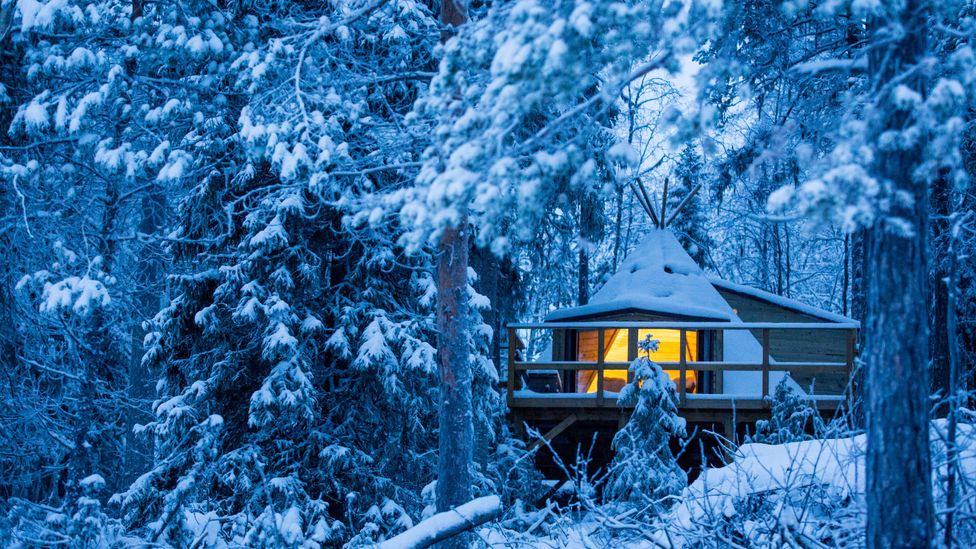
The camp’s new Tipi Cabins have north-facing glass verandas for prime aurora viewing (Credit: Fredrik Broman)
Though the camp has undergone an overhaul in the last few years, replacing the old breezy tents with luxurious heated cabins, the evening meals around the fire – along with the one remaining longdrop toilet – were call backs to the camps Gejke ran for so many years in Kenya.
The Northern Lights is the thing that gets people here. That's our version of a lion or a leopard, and people are just as desperate to take photos
As the main course – ox meatballs based on Gejke's grandmother's recipe – was being plated, I finally broached the subject of the appeal of his self-professed safari camp without animals, which was coming off the back of a fully-booked winter season.
"The Northern Lights is the thing that gets people here," said Gejke. "That's our version of a lion or a leopard, and people are just as desperate to take photos."
Far from light pollution, the camp offers perfect conditions to witness the astrological phenomenon, with two of the site's cabins boasting glass roofs so visitors can enjoy the spectacle from the comfort of their beds.
But, according to Gejke, that is missing the point of what a stay at the camp is about.
"People go to Kenya to see the animals, but they get so much more," he said, between bites of meatballs. "They get to try new food, meet new people and experience a totally different way of living, and it's exactly the same here."
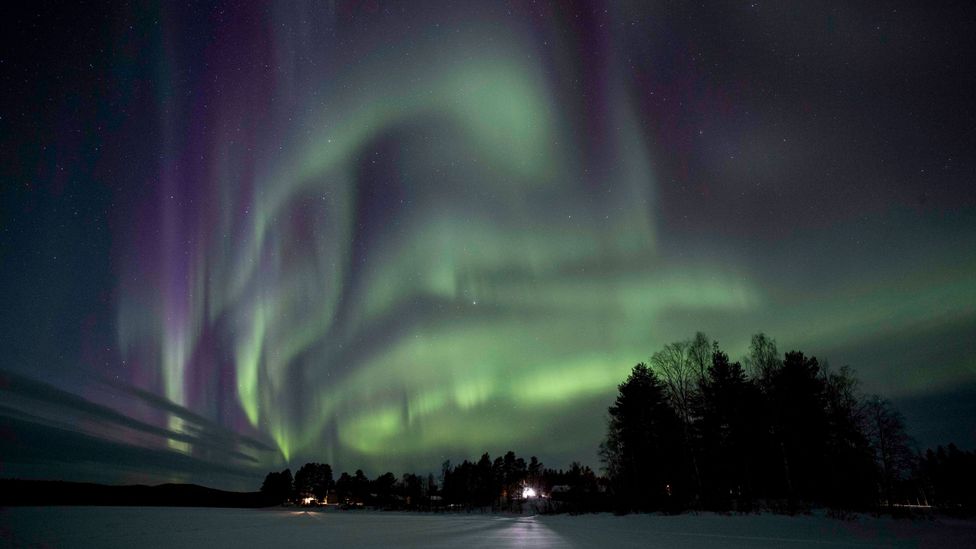
The camp offers perfect conditions to witness the Northern Lights (Credit: Fredrik Broman)
It's the opportunity to spend quality time in a magnificent environment interwoven with a rich local culture, that Gejke believes is the main thing guests take away from a stay at one of his camps, whether it's in the Swedish Arctic or African savannah. Anything else is a bonus.
It's for this reason Gejke sees guests return year after year, and people like Kerry struggle to leave. As a testament to the entrancing beauty of the area, the nearby village of Gunnarsbyn has no less than 23 different nationalities in its population of 189.
Inspired by the notion of a safari where the focus is on oneself, I decided to head for a sauna under the stars, which, due to a lack of running water on camp, serves as the only way to wash. En route, I was delighted to see a few fluorescent curls of the aurora flicker overhead.
Rather than snatching for my phone, I opted to simply watch, my neck craned towards the sky. The serenity of the moment, however, was quickly shattered by a shout from Kerry somewhere in the distance.
"Watch out for the bears!"
---
Join more than three million BBC Travel fans by liking us on Facebook, or follow us on Twitter and Instagram.
If you liked this story, sign up for the weekly bbc.com features newsletter called "The Essential List". A handpicked selection of stories from BBC Future, Culture, Worklife and Travel, delivered to your inbox every Friday.
